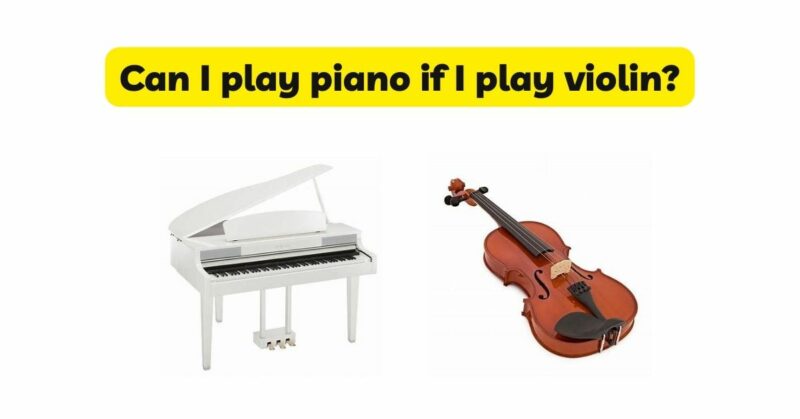As a violinist, you may have developed a passion for music and a desire to explore other instruments. One popular instrument that often piques the interest of violinists is the piano. You might be wondering if your skills and knowledge as a violinist will transfer to piano playing, or if learning the piano would be a feasible and rewarding endeavor. In this article, we will delve into the possibilities and advantages of playing the piano as a violinist, exploring the overlapping skills, the unique challenges, and the potential for musical growth that this instrument offers.
- Transferable Skills: As a violinist, you possess a strong foundation in music theory, ear training, and reading sheet music, which are skills that can be readily transferred to piano playing. Your knowledge of note values, rhythms, and key signatures will be applicable to both instruments, making the transition to piano smoother. Furthermore, your understanding of musical phrasing, expression, and dynamics acquired through violin playing can be easily translated to the piano, enabling you to create nuanced and expressive interpretations.
- Keyboard Familiarity: As a violinist, you are already familiar with the keyboard layout to some extent. Although the mechanics of playing the piano differ from those of the violin, your experience with reading sheet music and understanding the relationship between notes will help you adapt to the piano keyboard. The visual representation of the music on the piano, combined with your musical knowledge, will allow you to identify patterns and progressions, enhancing your learning process and overall musicality on the instrument.
- Hand Independence and Coordination: One of the significant challenges of piano playing is developing hand independence and coordination. As a violinist, you are accustomed to coordinating your left hand for finger placement and intonation while using your right hand for bowing. This hand independence and coordination can be beneficial when learning to play the piano. Your familiarity with dividing your focus between both hands will give you a head start in developing the necessary coordination for playing different melodies and harmonies on the piano.
- Sight-Reading Skills: Violinists often possess strong sight-reading skills due to the nature of their instrument. This ability to read and interpret music on the spot transfers well to piano playing. Although the fingerings and techniques differ, your experience with reading multiple lines of music and deciphering complex rhythms as a violinist will greatly facilitate your sight-reading ability on the piano. This skill will enable you to explore a wide range of musical repertoire and collaborate with other musicians more effectively.
- Enhancing Music Theory Understanding: Learning the piano can deepen your understanding of music theory. While the violin offers a vertical approach to music theory with its focus on individual lines and melodies, the piano provides a horizontal perspective, allowing you to see and comprehend the interplay between different voices and harmonies. The piano’s layout lends itself well to learning concepts such as chord progressions, intervals, and harmonization, expanding your knowledge of music theory and enhancing your overall musicianship.
- Expanding Repertoire and Musical Exploration: Playing the piano as a violinist opens up a vast repertoire and musical possibilities. The piano offers a wide range of genres and styles, allowing you to explore classical, jazz, pop, and more. By adding piano to your skillset, you can broaden your musical horizons and engage with a diverse range of composers and compositions. This expansion of repertoire and musical exploration not only enriches your overall musical experience but also provides new avenues for artistic expression and personal growth.
- Musical Collaboration and Ensemble Opportunities: The ability to play multiple instruments, such as the violin and the piano, opens doors for musical collaboration and ensemble opportunities. By learning the piano, you can participate in chamber music ensembles, collaborate with other instrumentalists, or accompany vocalists. This versatility allows you to engage with a wider range of musicians, foster new musical connections, and develop valuable ensemble skills. Playing multiple instruments also gives you a greater understanding of different musical roles within an ensemble setting.
Conclusion: In conclusion, as a violinist, learning to play the piano can be a rewarding and enriching experience. Your existing skills and knowledge as a violinist provide a strong foundation for exploring the piano. The transferable skills, such as music theory understanding, sight-reading ability, hand coordination, and familiarity with the keyboard, make the transition to piano playing smoother. Additionally, playing the piano expands your repertoire, enhances your musical exploration, and opens doors to collaborative and ensemble opportunities. By embracing the piano alongside your violin playing, you embark on a journey of musical growth, broadening your horizons and deepening your understanding and appreciation of the vast world of music.


